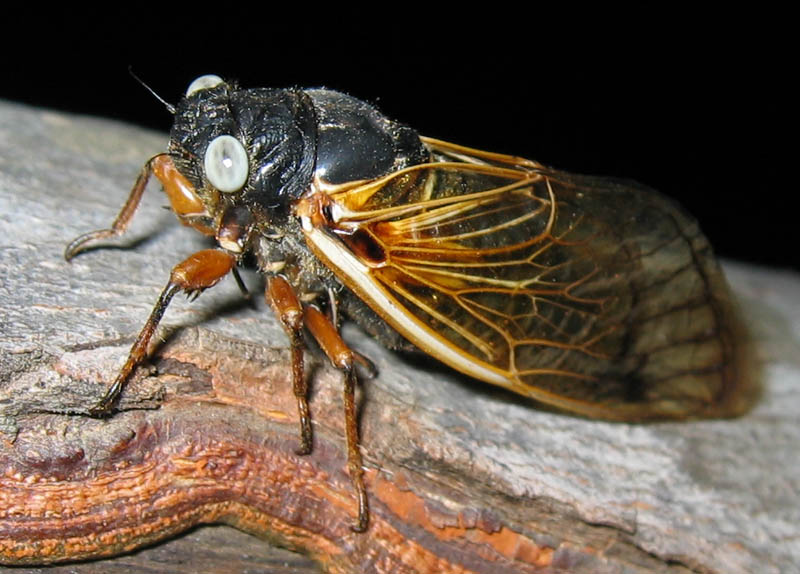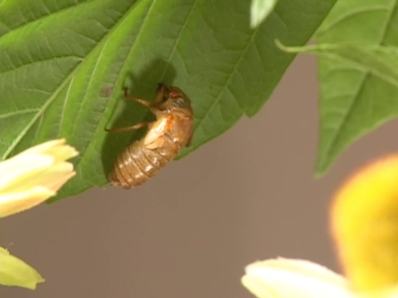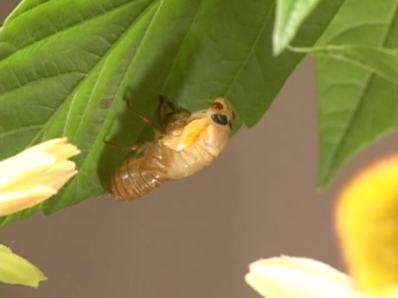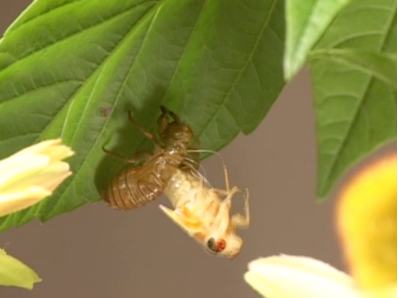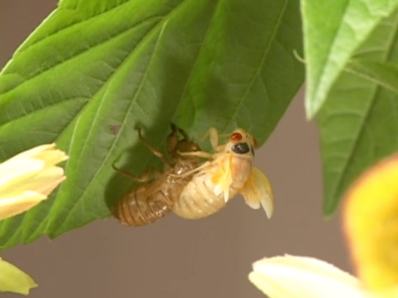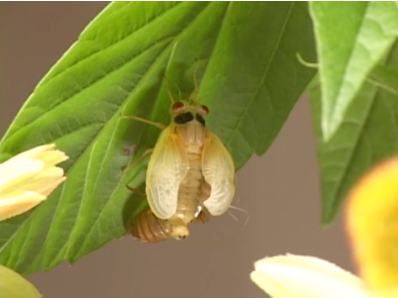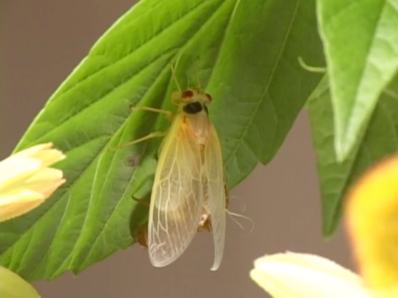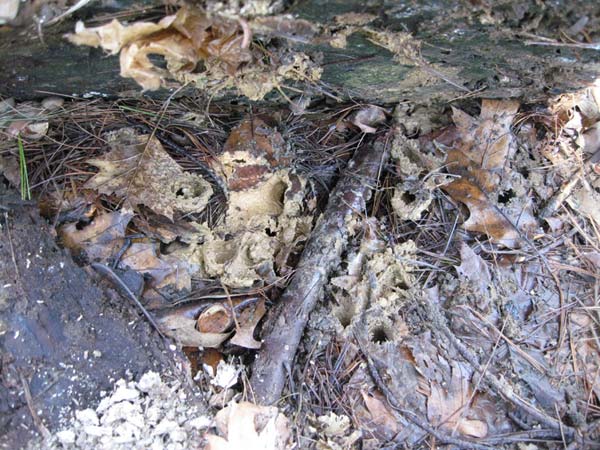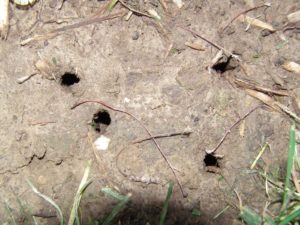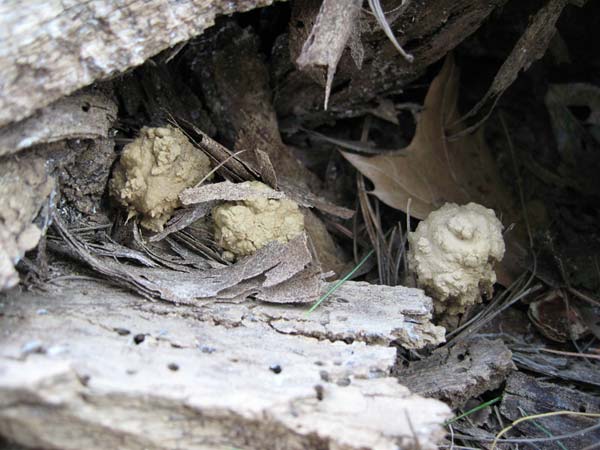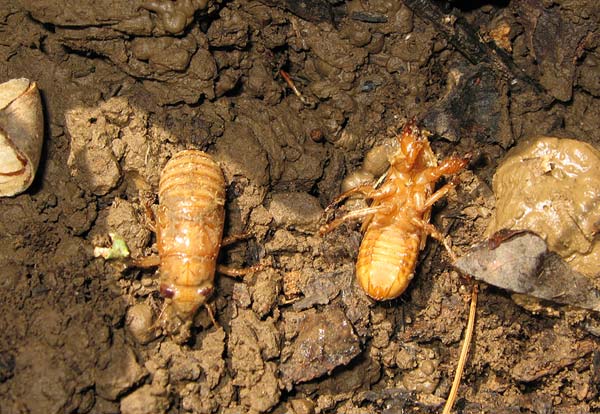Brood XIX (19) will next emerge in 2024.
This page has last updated in 2011.
What are they?
Magicicada is a genus of periodical cicadas known for emerging in massive numbers in 17 or 13-year cycles/periods. The cicadas emerging in 2011 have 13 year life-cycles. Magicicada cicadas are also organized into broods. There are 3 broods of 13-year cicadas, and the brood emerging in 2011 is Brood XIX (nineteen).
There are 4 species of 13-year Magicicada: M. tredecim, M. neotredecim, M. tredecassini and M. tredecula. The adults of all four species have black bodies with orange markings and red-orange eyes. M. tredecim and M. neotredecim are very similar, and you can only tell them apart by their song in areas where their ranges overlap (or by looking at DNA). They are, however, larger than M. tredecassini and M. tredecula, and have a noticeably different song.
Visit this Cicadas @ UCONN species page for detailed information, including photos and audio.
Here is some video and audio of 17 year Magicicada, which look and sound remarkably similar to the 13 year variety. This will give you an idea of what to expect:
Cicada Mania, best of 2007, part 1 by Dan from Cicada Mania on Vimeo.
Note: some folks call these cicadas “locusts”, but they are not true locusts.
When will they emerge?
The Brood XIX Magicadas will emerge this spring. When they emerge depends on the weather. Generally speaking, once the ground temperature gets to 64º Fahrenheit (18º C) around 8″ (20 cm) deep they will emerge. There’s an emergence formula too. Brood XIX cicadas in Georgia will most likely emerge before the cicadas in Illinois, for example, because Georgia is typically warmer than Illinois.
Where will they emerge?
Historically, Brood XIX has emerged in as many as 14 states. The emergence will cover the most area in Alabama, Arkansas, Illinois, Missouri, and Tennessee. Other states like Georgia, Kentucky, North Carolina, and South Carolina should have strong emergences in limited areas, and states like Indiana, Louisiana, Oklahoma, and Virginia will have very limited emergences.
Important: Magicicadas won’t emerge everywhere you see on the map below. They might not exist in your town or neighborhood (particularly if there’s lots of new construction, which removes trees). The key to seeing them if they don’t emerge in your neighborhood is communication: networking with friends and family, checking the interactive maps on magicicada.org, checking sites like Twitter, Facebook, and YouTube.
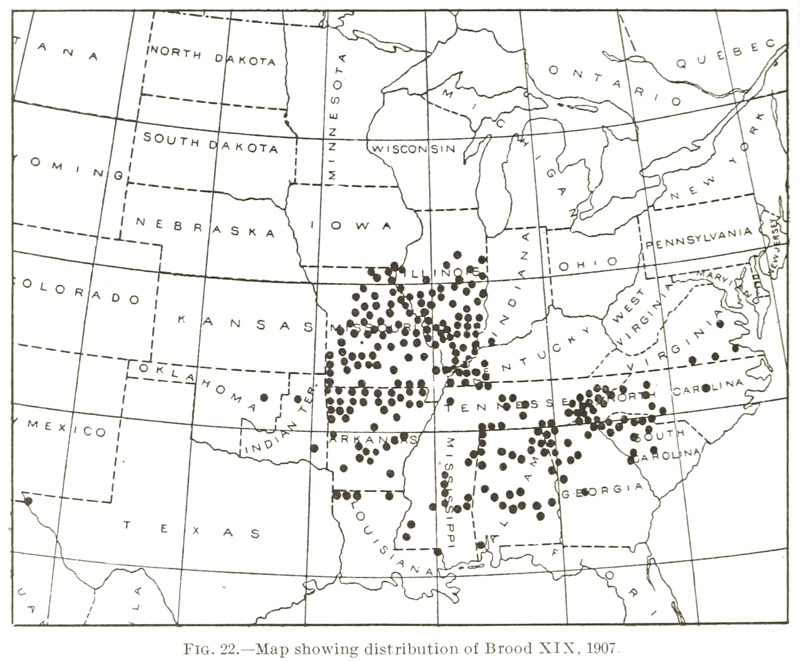
1907 map from Marlatt, C.L.. 1907. The periodical cicada. Washington, D.C. : U.S. Dept. of Agriculture, Bureau of Entomology.
States:
- mid to northern Alabama
- Arkansas
- northern Georgia
- mid to southern Illinois
- south-western Indiana
- west Kentucky
- northern Louisiana
- Missouri
- mid to northern Mississippi
- North Carolina
- western Oklahoma
- north-west South Carolina
- Tennessee
- random places in Virginia
Why?
Why do Magicadas wait 13 years and why do they emerge in such large numbers? There are many theories why, but the primary reason could be that they’re trying to beat the predators. Since they emerge only once every 13 years, no species can anticipate their emergence (except man), and emerging in large numbers ensures that at least some of them will survive to reproduce.
Who?
People have many reactions to Magicicada including: fear, disgust, panic, mild curiosity, fascination, and fanaticism. We hope that YOU will find them fascinating, and get involved by helping to map the emergence, upload your cicada photos and videos to sites like YouTube and Flickr, and participate in discussions on Twitter and discussion forums.
More information:
